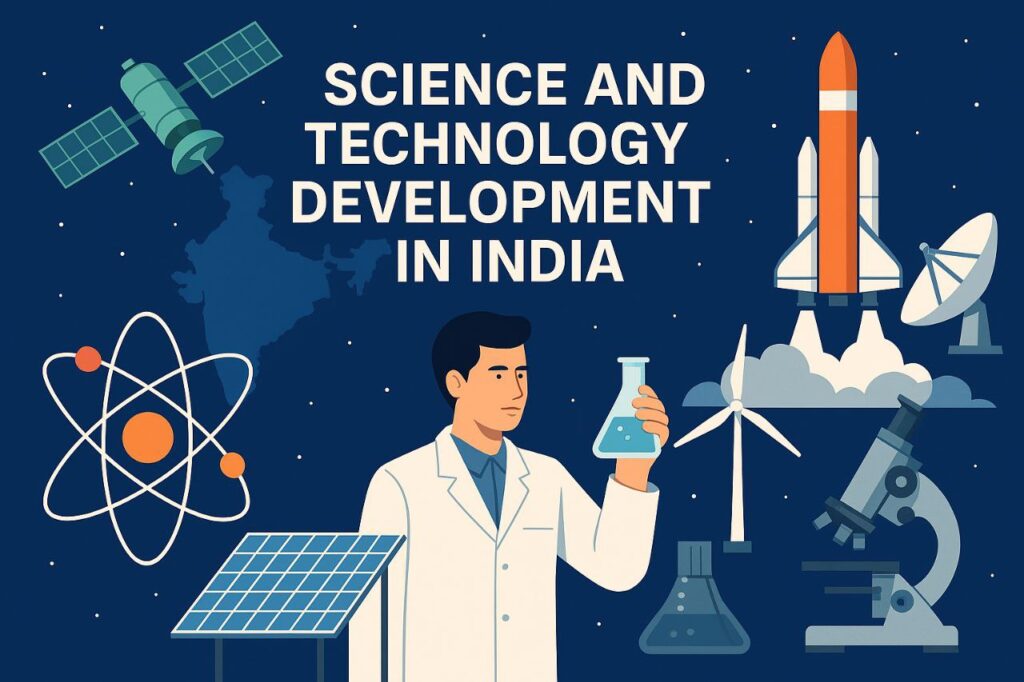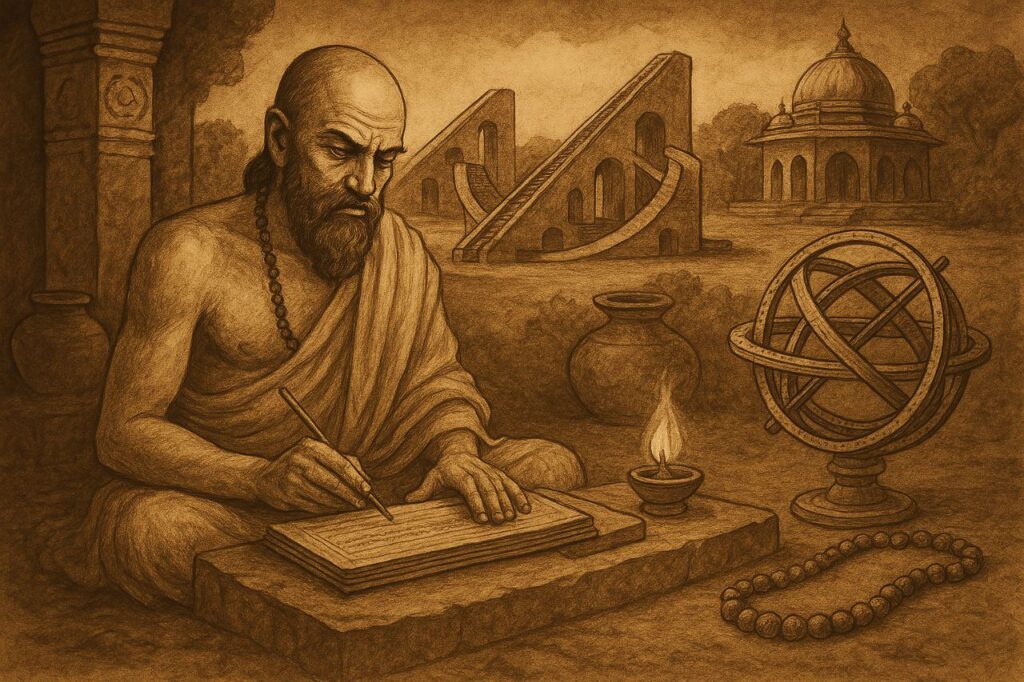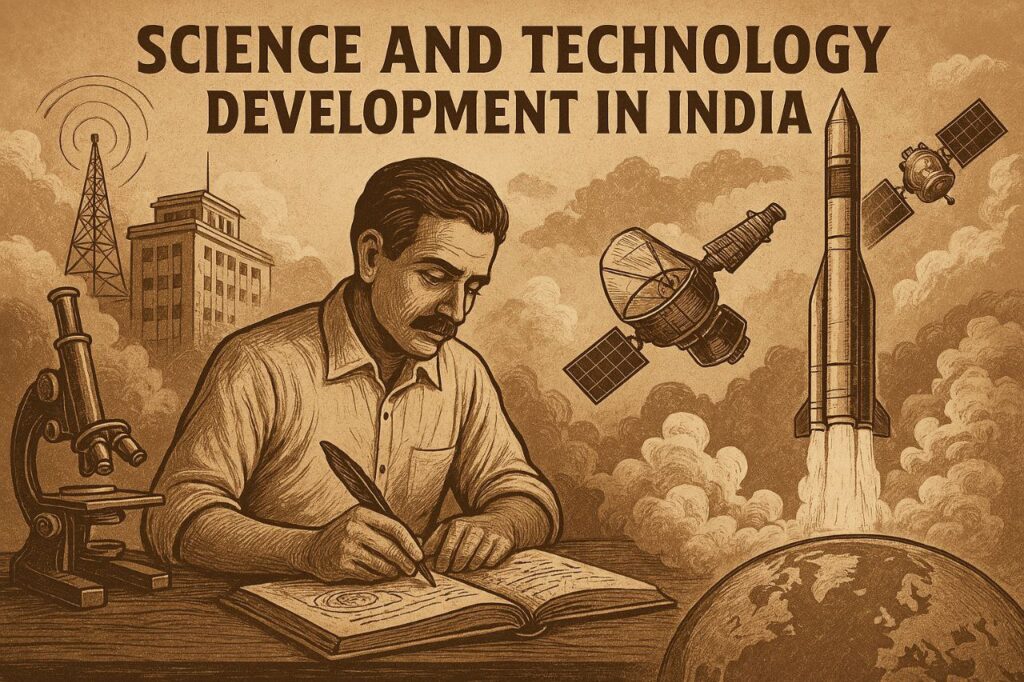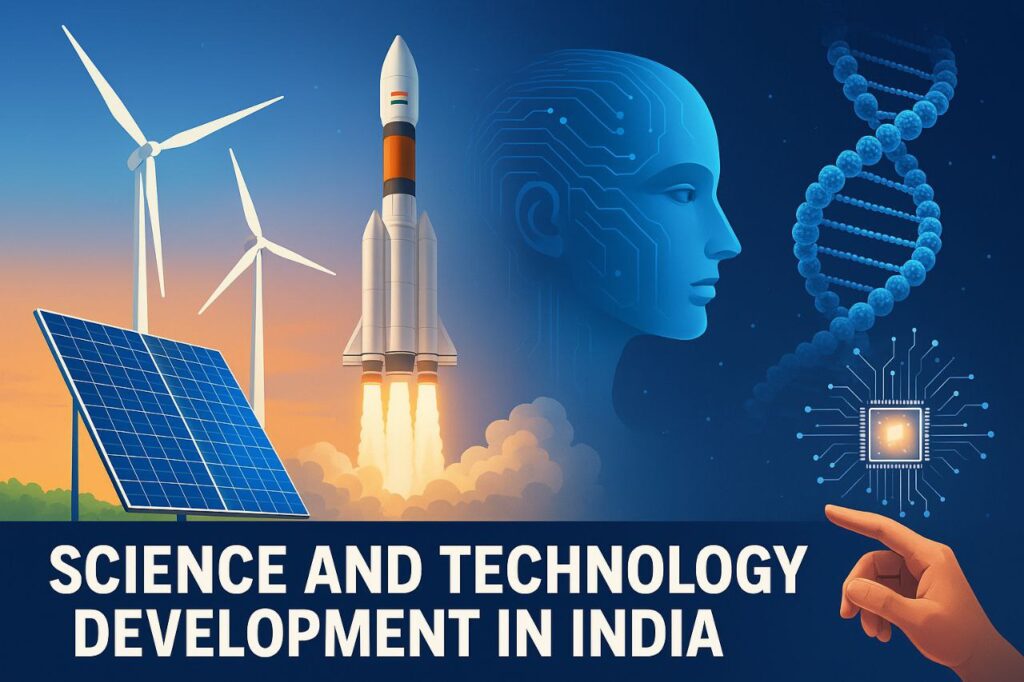Science and Technology in India: Evolution, Policies, and Institutions:

Introduction
Science and Technology (S&T) are the backbone of modern civilization and essential for national development, security, and economic prosperity. In India, science and technology have evolved through centuries of philosophical inquiry, empirical studies, and institutional support. From the Indus Valley Civilization to the Mars Orbiter Mission, India’s journey in science and technology exemplifies resilience, vision, and innovation.
This article presents a comprehensive view of the evolution of science and technology in India, key policies, the role of government institutions, and their collective contribution to India’s development. Special attention is given to the Department of Science and Technology (DST), the Council of Scientific and Industrial Research (CSIR), and the National Science, Technology, and Innovation Policy.
- Evolution of Science and Technology in India
Ancient Period: Indigenous Knowledge Systems

India has a rich tradition of scientific knowledge that dates back to ancient times. Civilizations like the Indus Valley exhibited advanced urban planning, water management, and metallurgy. Ancient texts such as the Vedas and Upanishads reveal a sophisticated understanding of mathematics, astronomy, and natural sciences.
Notable achievements include:
- Mathematics: Aryabhata’s concept of zero and the approximation of pi.
- Astronomy: Varahamihira and Bhaskaracharya’s work in planetary motion.
- Medicine: Charaka Samhita and Sushruta Samhita formed the foundation of Ayurveda and surgery.
- Architecture and Engineering: Techniques used in building temples, irrigation systems, and iron pillars resistant to rust.
Medieval Period: Continuity and Stagnation
During the medieval era, scientific development continued, particularly in metallurgy, textiles, and medicine. However, with the advent of invasions and colonial rule, indigenous scientific efforts faced disruption.
Colonial Period: The Rise of Modern Science
The British introduced Western education and research frameworks in India. Institutions like the Indian Association for the Cultivation of Science (1876) played key roles in promoting scientific temper.
Key figures of this era:
- J.C. Bose: Pioneered work in plant physiology and wireless communication.
- Srinivasa Ramanujan: Revolutionized mathematical theory.
- C.V. Raman: Won the Nobel Prize for the Raman Effect.
- Meghnad Saha and S.N. Bose: Made fundamental contributions in physics.
Post-Independence Era: Institution Building and Strategic Vision
Post-1947, science and technology became central to India’s development strategy. Prime Minister Jawaharlal Nehru envisioned a scientific temper and promoted industrialization through S&T.

Key developments:
- Establishment of Indian Institutes of Technology (IITs), Atomic Energy Commission, and Indian Space Research Organisation (ISRO).
- Emphasis on self-reliance in nuclear energy, agriculture (Green Revolution), and industrial R&D.
The focus shifted toward applied sciences, engineering education, and innovation for national needs.
2. Government Policy and Institutions
The Indian government has played a crucial role in promoting science and technology through policy frameworks and institutional infrastructure.
A. Department of Science and Technology (DST)
Established in 1971, DST acts as a nodal agency for the promotion of science and technology in India.
Key functions:
- Formulating S&T policies.
- Funding R&D projects.
- Supporting scientific institutions.
- Promoting science communication and innovation.
Major programs:
- INSPIRE (Innovation in Science Pursuit for Inspired Research).
- National Mission on Interdisciplinary Cyber-Physical Systems (NM-ICPS).
- Technology Development Programme (TDP).
DST also supports national research facilities, fellowships, and incubators for technology startups.
B. Council of Scientific and Industrial Research (CSIR)
Formed in 1942, CSIR is India’s largest publicly funded R&D organization with over 37 laboratories.
Major contributions:
- Indigenous development of pharmaceuticals, chemicals, and materials.
- Projects in aerospace, agriculture, energy, and environmental sciences.
- Development of COVID-19 diagnostics and drugs.
CSIR promotes translational research, patents, and collaboration with industry.
C. National Science, Technology, and Innovation Policy (STIP)
India has adopted various S&T policies over the years:
- 1983 Policy: Emphasized self-reliance.
- 2003 Policy: Focused on investment and global competitiveness.
- 2013 Policy: Aimed to position India among the top 5 global scientific powers.
- 2020 STIP (Draft): Emphasizes open science, inclusivity, decentralization, and public-private partnership.
Key highlights of STIP 2020:
- Democratizing science and expanding access.
- Encouraging innovation and entrepreneurship.
- Enhancing funding and infrastructure.
3. Science and National Development
Science and technology in India have contributed significantly to India’s economic, social, and strategic development.
Agriculture
- The Green Revolution in the 1960s transformed India from a food-deficit nation to a self-sufficient one.
- Use of biotechnology, precision farming, and agro-informatics are revolutionizing agriculture.
Healthcare
- India’s pharmaceutical industry ranks third globally in volume.
- Advances in biotechnology have enabled vaccine production, genetic research, and diagnostics.
- Telemedicine and AI applications in diagnostics are improving rural healthcare.
Information Technology
- India has become a global IT hub due to software exports, startups, and a skilled workforce.
- Initiatives like Digital India, Smart Cities, and BharatNet are leveraging ICT for governance.
Energy
- Focus on renewable energy (solar, wind, biomass) under missions like the National Solar Mission.
- Progress in nuclear energy, including thorium-based reactors.
Environment and Climate Change
- Science-based solutions for air pollution, waste management, and climate modeling.
- Development of electric vehicles (EVs) and battery technologies.
Defense and Space
- ISRO: Achievements include PSLV, GSLV, Chandrayaan, and Mangalyaan missions.
- DRDO: Developed missiles (Agni, Prithvi), aircraft (Tejas), and advanced defense systems.
4. Recent Initiatives and Global Standing
India is increasingly participating in global science diplomacy and research collaborations:
- Partnerships with NASA, CERN, ROSCOSMOS, and ITER.
- Rising position in global innovation indices and patent filings.
- Focus on AI, quantum computing, nanotechnology, and cybersecurity.
Startup Ecosystem
- Emergence of tech startups in AI, robotics, biotechnology, and space (Skyroot, Agnikul).
- Government support via Startup India, Atal Innovation Mission, and Make in India.
Gender and Inclusion in Science
- Efforts to enhance women’s participation in S&T through programs like KIRAN.
- Promoting inclusive research policies and regional representation.
Conclusion
Science and technology have been instrumental in India’s transformation from a developing nation to an emerging global power. With a solid foundation in ancient knowledge and modern institutional support, India continues to harness science for inclusive development, national security, and economic growth.
Moving forward, strategic investments, public-private partnerships, and a strong focus on innovation and inclusivity will be key to making India a knowledge superpower. The integration of science in policy-making, education, and everyday life remains the most effective tool for shaping a prosperous and sustainable future.

